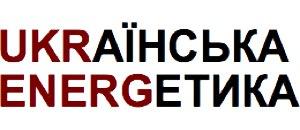Long-term decarbonisation pathways for Ukraine’s power sector
REKK | DIXI Group | Institute for Economics and Forecasting | RAP | Austrian Institute of Technology
Ukraine plans to decarbonize its power sector by no later than 2050 and the entire economy by 2060, according to its Energy Strategy and National Economic Strategy. It is an enormous undertaking in a highly uncertain environment. Due to the war, the Ukrainian power sector faces multiple challenges: reconstruction of the damaged network and generation assets and, at the same time, meeting the current and forecasted increase in power needs that accompany rebuilding. In this context, it is fundamental that the transition is carried out in a cost-efficient, socially and environmentally responsible way. This report aims to help this transition planning by analysing long-term decarbonisation scenarios for the Ukraine’s power system, using quantitative models. It assesses the feasibility of reaching a net zero power system by 2050 through modelling the adjacent costs in two Net Zero scenarios with different technology portfolios. The study develops two Net Zero scenarios, in addition to the Reference scenario which reflects the frozen policy and, to a wide extent – frozen technology pathway.
The Net Zero–Open Technology scenario is a technology-neutral trajectory, based on an optimistic cost assumption for nuclear technologies (both for large and small modular reactors (SMR)) that is identical to the one used in the Ukraine Energy Strategy.
The Net Zero–Renewable energy (RES) scenario assumes higher nuclear investment cost, corresponding to the latest trends observed in Europe. Consequently, this places a primary emphasis on renewables as the dominant technology of the energy transition.
The assessment shows that decarbonising the Ukrainian power sector before 2050 is feasible, both technically and economically. Power demand is met in both scenarios in all modelled years. There is sufficient flexible generation to provide adequate reserve capacities, even in the face of demand that, driven by the strong electrification and sector coupling, is anticipated to reach almost three times its current level.


These Net Zero scenarios foresee 90-100 GW new PV and wind capacities by 2050. After 2035, massive wind development is anticipated to take place, driven by the carbon pricing introduced in these scenarios. Solar development is very dynamic until 2040, when offshore wind grows dynamically. Reaching net zero is feasible without new nuclear reactors, meaning that nuclear at the current investment cost level in the European Union (EU) is more expensive than renewables. Ukraine has to follow nuclear investment developments closely to minimise the risk of stranded costs of new reactors. The results also confirm that rapid coal phase out is possible. The Net Zero scenarios demonstrate that coal could be completely phased out from the generation mix by 2030, if EU-equivalent carbon pricing was introduced, sufficient renewable capacities were added and the Zaporizhzhya power plant returned to operation in full capacity. Natural gas plants play a bridging role in the energy transition, slightly increasing their contribution to the electricity mix up until 2040 in all scenarios providing system flexibility and later serving as reserve units.
The total system cost of meeting the increasing energy demand while eliminating emissions is nearly identical to pursuing business-as-usual development (as in the Reference scenario), despite adding a price to carbon and investing substantial resources in low carbon technologies.




